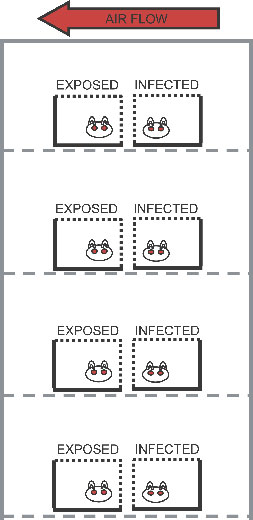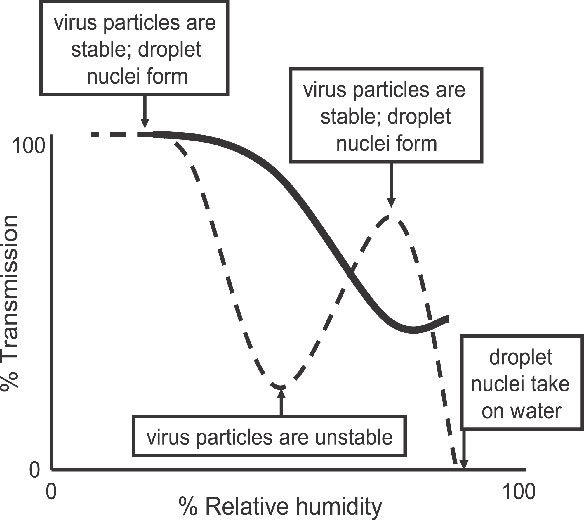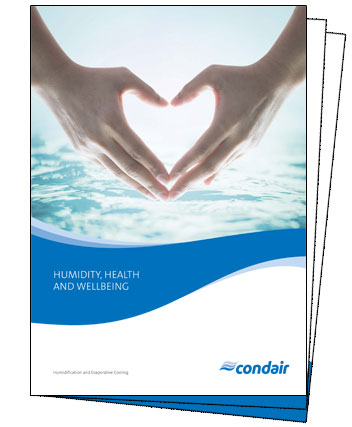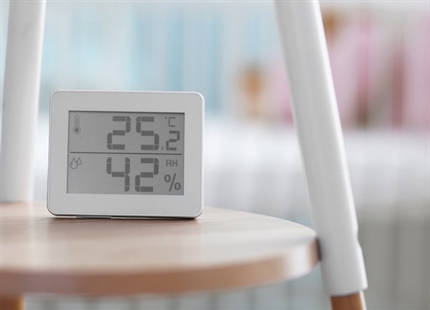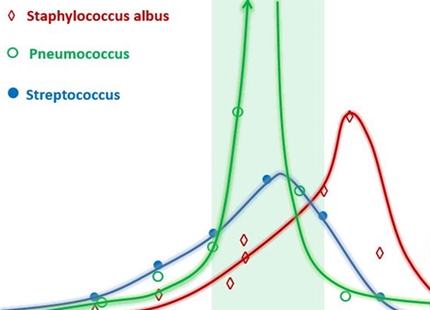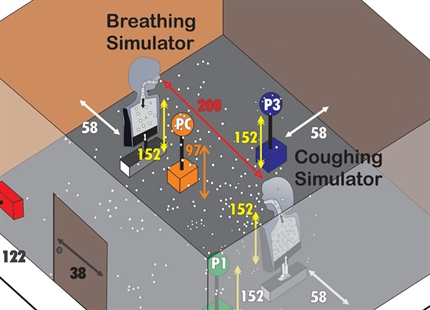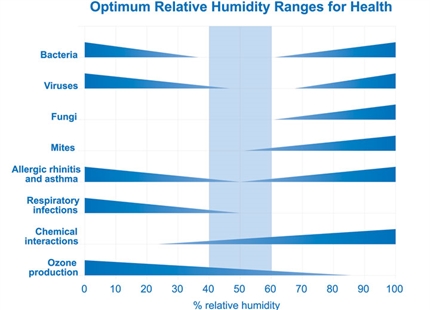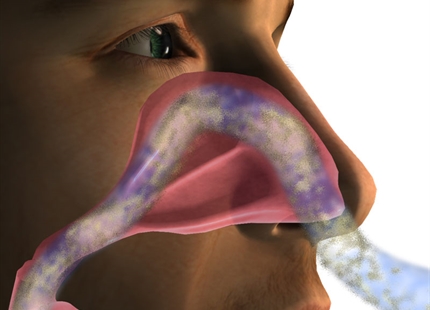Published: Oct 2007 | PLoS One Pathogens Okt. 2007/Vol. 3/Issue 10/e151
Influenza virus transmission is dependent on relative humidity and temperature
Anice C Lowen, Samira Mubareka, John Steel, Peter Palese
Abstract summary
Using the guinea pig as a model host, we show that aerosol spread of influenza virus is dependent upon both ambient relative humidity and temperature.
Twenty experiments performed at relative humidities from 20% to 80% and 5°C, 20°C, or 30°C indicated that both cold and dry conditions favor transmission.
In each experiment, eight animals were housed in a Caron 6030 environmental chamber. Each guinea pig was placed in its own cage, and two cages were positioned on each shelf. Naïve animals were placed behind infected animals, such that the direction of airflow was toward the naïve animals.
The cages used were open to airflow through the top and one side, both of which were covered by wire mesh. Although infected and exposed guinea pigs were placed in pairs, air flowed freely between shelves, allowing transmission to occur from any infected to any naïve animal.
Results summary
The results of transmission experiments performed at 20 °C and five different RHs (20%, 35%, 50%, 65%, and 80%) indicated that the efficiency of aerosol spread of influenza virus varied with RH.
Transmission was highly efficient (occurred to three or four of four exposed guinea pigs) at low RH values of 20% or 35%. At an intermediate RH of 50%, however, only one of four naïve animals contracted infection. Three of four exposed guinea pigs were infected at 65%RH, while no transmission was observed at a high RH of 80%.
At 20°C transmission efficiency is highest at low RH, when influenza virions in an aerosol are relatively stable, and desiccation of exhaled respiratory droplets produces droplet nuclei. Transmission is diminished at intermediate RH when virus particles are relatively unstable, but improves in parallel with influenza virus stability at higher humidities. At high RH, evaporation from exhaled particles is limited, respiratory droplets settle out of the air, and transmission is blocked. At 5 °C, transmission is more efficient than at 20 °C, but is reduced to a rate of 50% at higher humidities.
Scientific studies main menu